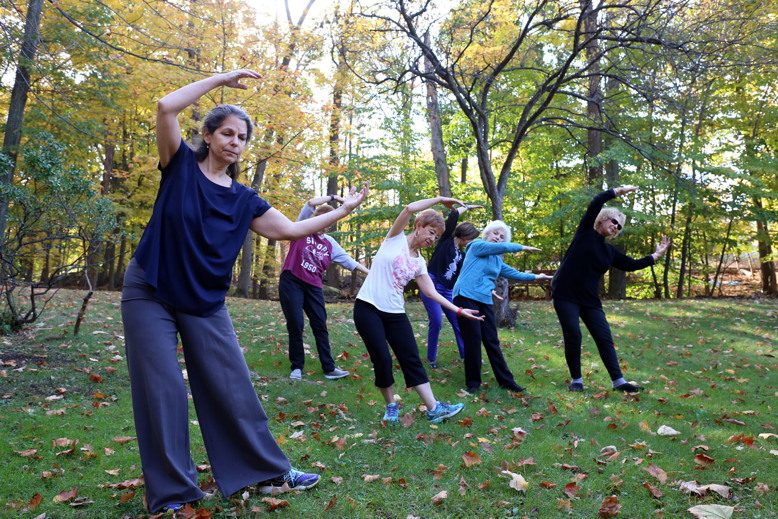
Barbara Kennedy tried meditation to relieve stress, but was never able to tame her whirling mind. Then the former nurse discovered the Chinese healing art of qigong.
Sometimes called “moving meditation,” qigong consists of specific postures, breathing techniques and sounds designed to stimulate the body’s energy pathways, known in Chinese medicine as meridians, which connect to specific organs in the body.
The practice proved a fluid fit for Kennedy, who has been attending classes for four years at the Montclair Adult School.
Often confused with tai chi, which is a defensive martial art, qigong is considered a healing art. The name is derived from the translation of two Chinese words, qi—for energy—and gong—effort over time. Combined, they signify the cultivation of energy through regular practice.
“Our bodies have flow like a river,” says Miriam Shankman, Kennedy’s instructor. “Sometimes the river pools in places and becomes stagnant, congested, a kind of cesspool. Qigong stimulates the meridians and makes the river flow more efficiently.”
The meditative movement has made a big difference for Kennedy. Qigong, she says, “stretches your muscles, engages your mind and takes you out of your head. I can come there extremely worn down and leave feeling relaxed and energized.”
Shankman, who is certified by the National Qigong Association and the International Institute of Medical Qigong, says the practice is appropriate for many fitness levels and age groups; baby boomers are especially drawn to the practice. “Almost everyone I work with is 50 or over, and many are much older,” she says. “There is not a lot of memorization or strenuous movement.”
Shankman’s classes are offered through the Montclair Adult School, at the Cedar Grove Library, the WAE (Wellness, Arts, Enrichment) Center in West Orange and St. Barnabas Hospital.
Stress relief is a big draw for qigong students, perhaps because its slow pace runs counter to the rush of daily life.
At her website, Shankman offers a DVD to help students practice at home—as often as daily. “Very few people can go to acupuncture every day,” she notes, adding, “When you practice, you are taking responsibility for your well-being. That makes you stronger.”



